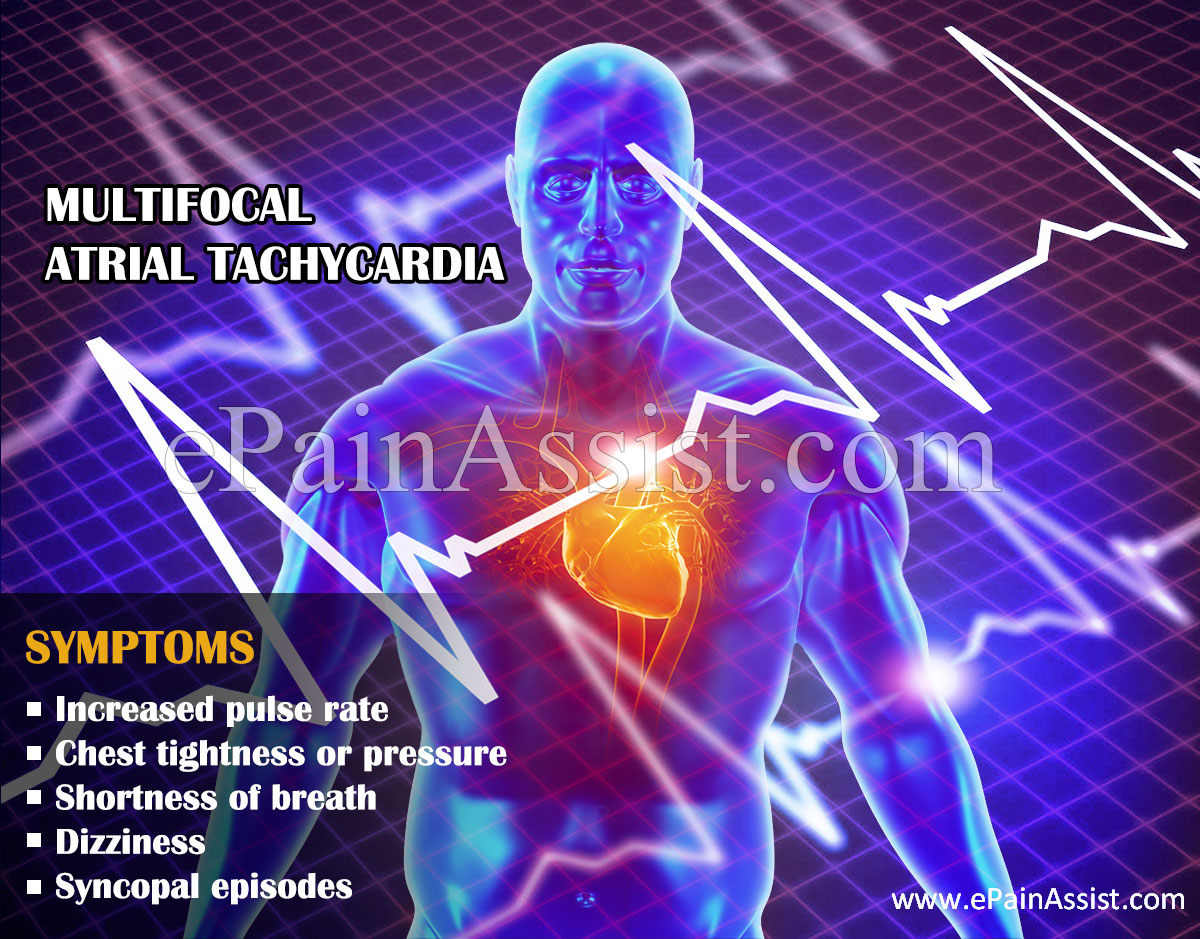What is Multifocal Atrial Tachycardia?
Multifocal Atrial Tachycardia is a pathological cardiac condition in which the heart beats much faster than it normally should. The main cause of Multifocal Atrial Tachycardia is an abnormality in the signals which are being sent from the upper chambers of the heart which is the atria to the lower chambers of the heart which are the ventricles. This condition is called as multifocal as the signals are transmitted through tissues all over the upper chamber of the heart rather than from a single SA node. In cases of Multifocal Atrial Tachycardia, the heartbeat of an individual may go up to as high as 250 beats per minute which is more than twice the normal heart rate.

What Causes Multifocal Atrial Tachycardia?
When an individual suffers from Multifocal Atrial Tachycardia, it causes abnormal electrical signals to be emitted from different areas of the heart all at once causing abnormally fast heart rates. This condition is seen mostly in people above the age of 50 years. There are also some medical conditions which may result in Multifocal Atrial Tachycardia. These conditions are:
- Chronic Obstructive Pulmonary disease
- Bacterial pneumonia
- Congestive heart failure
- Pulmonary embolism
- Lung cancer
- Failure of the lungs to function.
What are the Risk Factors for Multifocal Atrial Tachycardia?
Some of the risk factors for developing Multifocal Atrial Tachycardia are:
- Diabetes mellitus
- Coronary heart disease
- Sepsis
- Postsurgical conditions, especially within the first six weeks of surgery
- Overdose of asthmatic medications.
What are the Symptoms of Multifocal Atrial Tachycardia?
In most cases of Multifocal Atrial Tachycardia, there are no symptoms observed but in cases when there are symptoms they may include the following. The severity of the symptoms depends on the age and overall health status of the patient. The symptoms observed are:

- Increased pulse rate
- Chest tightness or pressure
- Shortness of breath
- Dizziness
- Syncopal episodes.
How is Multifocal Atrial Tachycardia Diagnosed?
In case during routine evaluation you are found to have a heart rate of above 200 beats per minute then the physician may suspect a case of Multifocal Atrial Tachycardia.
In order to confirm the diagnosis the following tests may be ordered:
Electrocardiogram: This test shows the heartbeat in the form of electrical impulses. This test can show whether there is any abnormality in the rhythm of the heart and whether the heart is functioning normally.
Echocardiogram: This test makes use of ultrasound waves to look at the functioning of the heart. This test can accurately identify any abnormality of the functioning of the heart.
Holter Monitor: In this test, a portable ECG device is given to the patient to carry. This device records the heart’s electrical activity throughout a period of 24 hours and can identify any defect in the rhythm and rate of the heart.
The physician may also recommend an inpatient monitoring the heart for a period of 24 hours to confirm the diagnosis of Multifocal Atrial Tachycardia.
How is Multifocal Atrial Tachycardia Treated?
In case Multifocal Atrial Tachycardia is being caused by an underlying medical condition, then the physician will start off treating Multifocal Atrial Tachycardia by controlling the medical condition. Apart from this, there are certain medications like beta-blockers or calcium channel blockers that can be given for treatment of Multifocal Atrial Tachycardia. In case if the medications are not effective in controlling the heart rate then a surgical removal of the tissue or tissues that are sending the abnormal signals may be removed. This procedure is called as atrioventricular ablation. If a patient undergoes this procedure then more often than not he or she will need to have a pacemaker implanted to control the rate of the heart and prevent further episodes of Multifocal Atrial Tachycardia.
What is the Overall Prognosis of Multifocal Atrial Tachycardia?
Majority of the cases of Multifocal Atrial Tachycardia can be adequately controlled by treating the underlying medical condition causing it but in case if the medical condition is not controlled adequately then it may cause certain complications like reduced ability of the heart to pump blood to various parts of the body, congestive heart failure, or cardiomyopathy as a result of Multifocal Atrial Tachycardia.
